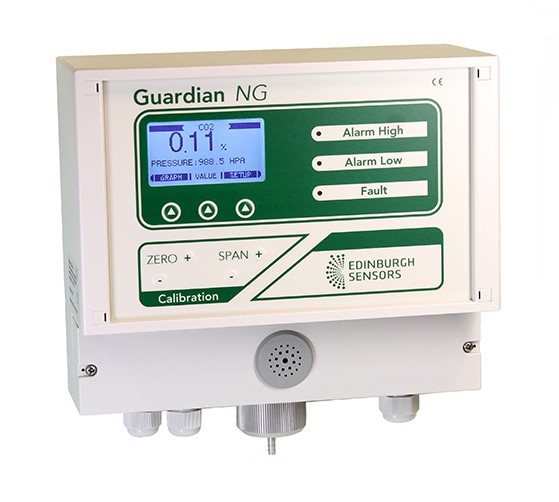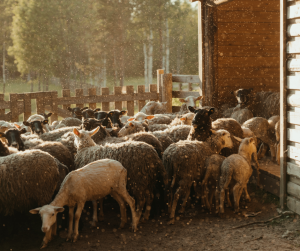Gas Stunning
Stunning methods are used to cause unconsciousness in animals prior to slaughter. Ideally, stunning will leave an animal insensible to pain and distress during the slaughtering process, while causing minimal distress in itself.
Of the available stunning methods, percussive or electrical methods are the most widely used1 but gas stunning may also offer an effective alternative compatible with maintaining high standards of animal welfare.2
Gas stunning, otherwise known as Controlled Atmosphere Stunning (CAS), offers several animal welfare advantages over other stunning techniques as it means animals do not need to be shackled, separated from herds, or placed on conveyors for slaughter.3 There are several different approaches to gas stunning that use several mixtures of gas to render the animals unconscious, including gases such as nitrogen, argon, and carbon dioxide. Gas mixtures can be used not just for the stunning process, but for slaughtering the animals as well, which can be combined with CAS methods.

Image Credit: Sandy Noto/Canva.com
Regardless of the types of gases used, there are strict European regulations that have been in force in 2013 about measuring and monitoring the exact concentrations used to minimize animal distress.4
Controlling Carbon Dioxide Levels in Gas Stunning
While insufficient carbon dioxide concentrations may leave animals still conscious at the time of slaughter, too rapidly increasing carbon dioxide concentrations have been shown to cause distress to animals including both pigs and poultry.3,5 This means to achieve the high carbon dioxide concentrations needed to render animals unconscious, many gas stunning schemes involve several phases of changing carbon dioxide concentrations to avoid any unnecessary distress.3 The UK also has the Welfare of Animals (Slaughter or Killing) Regulations 1995 (WASK 95) that dictate that the carbon dioxide concentration must not exceed 30 %, and external devices must be used to measure by volume the maximum concentration with audible warning systems should concentrations deviate from the legislated limits.6
While a great deal of care and attention is required for the control of gas stunning practices, when properly executed, humane stunning practices have a positive effect on final meat quality.2 Gas stunning methods can be very efficient as it minimizes transport of livestock and herds can be stunned at a time, rather than requiring an individual operator to prepare and stun individual animals. The key to good practice, compliant with UK and EU legislation, is to have areas fitted with rapid-response online gas monitoring devices integrated into feedback and control systems for the stunning process.
Gas Stunning: Robust Gas Monitoring Solutions
Edinburgh Sensors have extensive expertise in field-deployable non-dispersive infra-red (NDIR) gas sensors. They have developed a range of real-time gas monitors, with several well-suited to carbon dioxide sensing for livestock stunning and slaughter for meat processing. These include the Guardian7 and GasCard NG.8
Both the Guardian and GasCard NG offer highly accurate, online sensing capability for carbon dioxide with real-time data logging and the possibility to integrate the sensors with alarm features or other gas-monitoring sensors as required. The use of alarms with gas monitors is a key part of UK legislation for gas stunning processes and it is essential that any gas monitors used are extremely accurate, as small deviations in gas concentrations can cause issues with the stunning process and compliance with legislation.
Both sensors are based on the latest patented NDIR technologies with the Guardian NG offering a carbon dioxide detection range of 0 – 3000 ppm and 0 – 100 % volume. There are a range of GasCard NG options that offer either similar specifications or larger ranges, including 0 – 5000 ppm.

Both devices are designed to be robust and accurate even with challenging, changing environmental conditions. The sensor readout is temperature, pressure, and humidity compensated, capable of ±2% accuracy across the full measurement range, even in 0 – 95 % humidity conditions. The NDIR sensors are designed with ease of use and installation in mind, and only require connection to a reference gas to be up and running.
The Guardian NG comes with its own onboard display and controls, including built-in programmable alarms and the capability for the graphical display of historical readings onboard the device. It boasts a rapid T90 response time of less than 30 s from the inlet, so even when using complex programmed multistep stunning processes, the sensor can provide near-instantaneous input on changing concentration levels. The sensor enclosure is IP54 rated to prevent dust and environmental protection and ensure a robust and long-lived sensing device.
The GasCard NG is designed for integration into gas sensing systems, coming with two potential communications channels including true RS232 communications or the option of TCP/IP communications protocol. Accuracy of readings benefits from onboard barometric pressure correction in the range 800mbar to 1150mbar and the GasCard NG also has an operating temperature range of 0 – 45ºC compatible with all animal processing conditions.
Both devices come with commercial software solutions for data logging to minimize installation and start-up time and custom solutions in collaboration with Edinburgh Sensors for more complex needs are also possible. Edinburgh Sensor’s products can help you ensure the best welfare for your animals with precise and easy monitoring of carbon dioxide concentrations.
References
- Food and Agriculture Organization of the United Nations, P. G. Chambers, (2001), http://www.fao.org/3/x6909e/x6909e09.htm, accessed 11th October 2020
- Berg, C., & Raj, M. (2015). A review of different stunning methods for Poultry—animal welfare aspects (stunning methods for poultry). Animals, 5(4), 1207–1219. https://doi.org/10.3390/ani5040407
- Gerritzen, M. A., Reimert, H. G. M., Hindle, V. A., Verhoeven, M. T. W., & Veerkamp, W. B. (2013). Multistage carbon dioxide gas stunning of broilers. Poultry Science, 92(1), 41–50. https://doi.org/10.3382/ps.2012-02551
- Slaughter and Stunning Regulations, European Commission (2020), https://ec.europa.eu/food/animals/welfare/practice/slaughter_en, accessed 11th October 2020
- Stunning of slaughter pigs with CO2. A pilot research to the effect of adding O2 to a CO2 concentration on animal welfare, (2009), http://www.themeatsite.com/articles/contents/gas_stunning.pdf, accessed 11th October 2020
- WKA Regulations – UK Government (1995), http://www.legislation.gov.uk/uksi/1995/731/contents/made, accessed 11th October 2020
- Guardian NG, Edinburgh Sensors (2020), https://edinburghsensors.com/products/gas-monitors/gas-monitor-guardian-ng/, accessed 10th October 2020
- Gascard NG, Edinburgh Sensors (2020), https://edinburghsensors.com/products/oem-co2-sensor/gascard-ng/, accessed 10th October 2020

